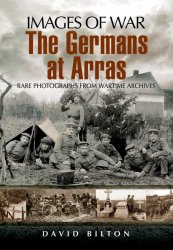American interest in track and field began at Princeton University in 1869, when Princeton students participated in track contests called the Caledonian Games. An athletic association at Columbia University also held its first track-and-field meet in 1869. Columbia, Yale, Princeton, and Cornell soon formed track clubs.
In the early 1870s track meets were held at regattas. During the 1873 regatta-sponsored track meet at Hampden Park in Springfield, Massachusetts, James Gordon Bennett, Jr., owner of the New York Herald, offered a $500 prize for the winner of a two-mile race. Duncan Bowie of McGill University won the race in 11 minutes, 18.5 seconds. The second regatta-sponsored track meet was held in
1874 at Saratoga, New York. About 30 students from eight colleges participated in the 100-yard dash, one - and three-mile runs, 120-yard hurdles, and seven-mile walk. The
1875 regatta-sponsored track meet at Saratoga included 10 track-and-field field events. Amherst, Cornell, Harvard, Union, Williams, and Yale boasted winners.
Trackmen soon took direct control of their annual meet from the regatta committee. Presidents of the Harvard and Yale Athletic Associations invited 10 colleges in December 1875 to form the Intercollegiate Association of Amateur Athletes of America IC4A). Management was given to a committee of students directly involved in track and field. The first annual IC4A meet was held in 1876 at Saratoga (the day after the regatta) with six running and nine field events. The IC4A prohibited foreigners from competing and awarded prizes to winners. Seventy-one athletes competed in the track and field events. Princeton captured the first IC4A title with four individual champions, including J. M. Mann in the baseball throw and 16-pound shot.
The IC4A remained the dominant college track-and-field event and was moved in 1877 to New York City. From 1880 through 1896, Harvard or Yale won every IC4A meet. American collegians set several track records after Charles Sherrill introduced the sprinter’s crouch-start in the late 1880s. Georgetown’s Bernie Wefers clocked 9.8 seconds in the 100-yard dash and 22.6 seconds in the 220-yard dash. The Amateur Athletic Union began holding annual track-and-field championships in 1888 and allowed noncollegiate amateurs to compete.
Americans made no concerted effort to send a strong track-and-field team to the first modern Olympic Games at Athens, Greece, in 1896. Princeton professor William Milligan Sloane, head of the American Olympic Committee, recruited four Princeton undergraduates. Eight Boston-area athletes, including seven from either Harvard or the Boston Athletic Association, completed the American team. Americans captured nine of the 12 track-and-field events, finishing second in five more. American victors were Tom Burke in the 100 meters and 400 meters, Tom Curtis in the 110-meter hurdles, Ellery Clark in the high jump and long jump, William Hoyt in the pole vault, Bob Garrett in the shot put and discus, and John Connolly in the triple jump. Americans also finished first in several track-and-field events at the 1900 Olympic Games at Paris, France. American winners were Frank Jarvis in the 100 meters, John Walter Tewksbury in the 200 meters and 400-meter hurdles, Maxey Long in the 400 meters, Alfred Kraenzlein in the 110-meter hurdles and long jump, Irving Baxter in the high jump and pole vault, Meyer Prinstein in the triple jump, Ronald Sheldon in the shot put, and John Flanagan in the hammer throw.
Further reading: Richard Mandell, The First Modern Olympics (Berkeley: University of California Press, 1976); Ronald A. Smith, Sports and Freedom: The Rise of Big-Time College Athletics (New York: Oxford University Press, 1988).
—David L. Porter




 World History
World History









